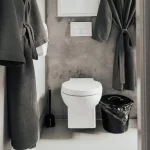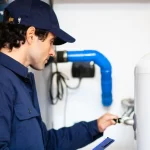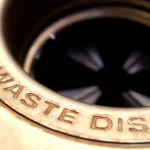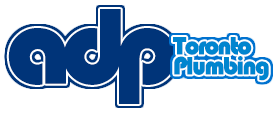We’re so accustomed to taking the flush toilet for granted, we forget that 100 years ago it was considered a mechanical miracle, and was only available in wealthy homes. Toilets tend to dysfunction at the most inconvenient times, and the flushing mechanism is one of the main culprits. Here are the five most common flush toilet problem, their causes and solutions. Often, the toilet repair is simple and can be done easily by the homeowner, but on occasion you might need professional help.
Flush Not Working
If the flush mechanism isn’t working at all, it’s usually one of two things:
– The tank is empty. Toilet problems relating to an empty tank may be caused by a leak or blockage of the water supply, or the float could be stuck preventing the valve from opening.
– The chain connecting the handle to the flapper is broken, preventing it from letting the water in the tank flow out into the bowl.
For the first problem, lift the lid and check if the float is stuck. Your toilet repair might require replacement of the fill valve, which you can do if you understand how valves work. Alternatively, if your water supply is leaking or blocked, you may need to call your local plumber to use a snake, infra-red or camera imaging to identify the issue.
Bowl Doesn’t Empty
When the toilet bowl doesn’t empty, the first conclusion you jump to is that the toilet is blocked. This might not be the case, however; the toilet problems may be due to low water pressure causing the tank to only fill partially. They might also actually be starting in the toilet tank itself, where the chain connecting the flapper to the handle might be too long, resulting in the flapper not lifting adequately to release the full supply of water. For the first issue you’ll need professional help, but for the second, you may be able to do a basic toilet repair by adjusting the chain.
Slow Flushing
Modern, low-flush toilets are designed to use less water. The tanks typically hold smaller quantities, which also affects the pressure of the flush and it may take several flushes to clear the bowl. Toilet problems also occur when dirt and mineral deposits build up under the rim of the toilet, blocking the flow of clean water into the bowl. In this case toilet repairs aren’t required, just a thorough cleaning with a tool such as a stiff wire brush to remove the deposits permanently. If necessary, try lime, calcium or hard water deposit removers such as CLR or white vinegar, which are commonly known to increase the flushing velocity of toilets.
Continuous Flushing
If your toilet problems include the continuous flushing of the toilet, this may be caused by a water leak. The water enters the toilet tank, but if the flapper isn’t correctly positioned to keep it there until it is flushed manually the water will keep running through as it flows in. Check the floating arm to see that it is rising enough to close the flapper at the bottom of the tank, or you’ll be in line for a very high water account!
Short Flushing
Occasionally you might find toilet problems resulting from short flushing, which occurs when the tank releases a powerful stream of water that lasts only a few minutes. This causes impartial cleaning of the bowl and may be caused by a water-logged flapper valve that drops too fast. If the valve drops before 80% or more of the water has been released from the tank, you may need to replace the flapper to resolve the problem. Fortunately, this is a simple toilet repair that you can do with a part readily available from most hardware stores.
Most toilet problems can be either prevented or resolved easily by if you know what to look for. If you need help with any plumbing issues, contact your local plumber for a free consultation to discuss your requirements.






